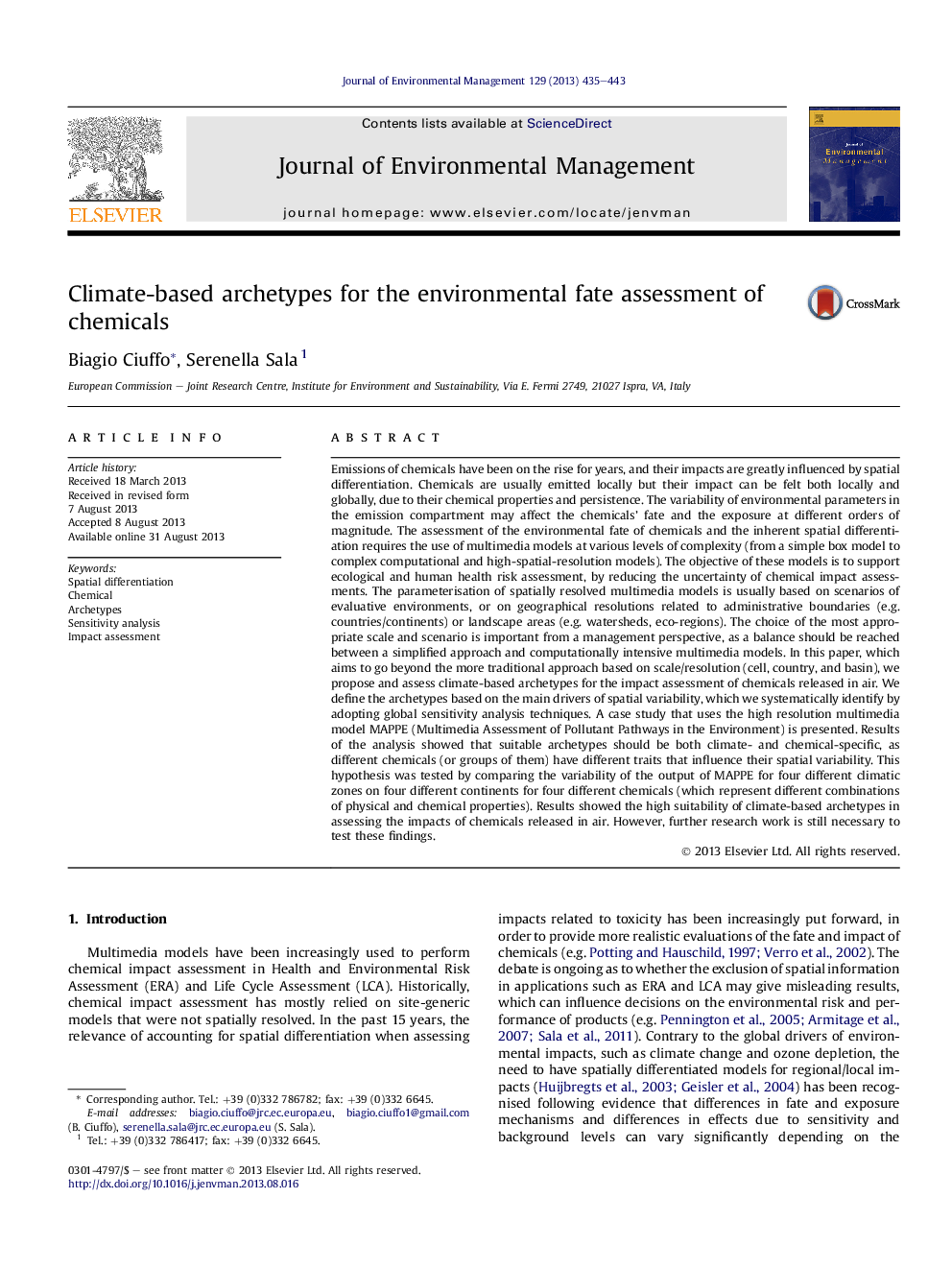| Article ID | Journal | Published Year | Pages | File Type |
|---|---|---|---|---|
| 1056187 | Journal of Environmental Management | 2013 | 9 Pages |
•Chemicals, although emitted locally, may exert both local and global impact.•Multimedia models are required for assessing the environmental impact of chemicals.•Global sensitivity analysis can support identification of emission archetypes.•Climate-based archetypes can mimic spatial variability in multimedia models.•Simplified archetype-based models can increase reliability of results.
Emissions of chemicals have been on the rise for years, and their impacts are greatly influenced by spatial differentiation. Chemicals are usually emitted locally but their impact can be felt both locally and globally, due to their chemical properties and persistence. The variability of environmental parameters in the emission compartment may affect the chemicals' fate and the exposure at different orders of magnitude. The assessment of the environmental fate of chemicals and the inherent spatial differentiation requires the use of multimedia models at various levels of complexity (from a simple box model to complex computational and high-spatial-resolution models). The objective of these models is to support ecological and human health risk assessment, by reducing the uncertainty of chemical impact assessments. The parameterisation of spatially resolved multimedia models is usually based on scenarios of evaluative environments, or on geographical resolutions related to administrative boundaries (e.g. countries/continents) or landscape areas (e.g. watersheds, eco-regions). The choice of the most appropriate scale and scenario is important from a management perspective, as a balance should be reached between a simplified approach and computationally intensive multimedia models. In this paper, which aims to go beyond the more traditional approach based on scale/resolution (cell, country, and basin), we propose and assess climate-based archetypes for the impact assessment of chemicals released in air. We define the archetypes based on the main drivers of spatial variability, which we systematically identify by adopting global sensitivity analysis techniques. A case study that uses the high resolution multimedia model MAPPE (Multimedia Assessment of Pollutant Pathways in the Environment) is presented. Results of the analysis showed that suitable archetypes should be both climate- and chemical-specific, as different chemicals (or groups of them) have different traits that influence their spatial variability. This hypothesis was tested by comparing the variability of the output of MAPPE for four different climatic zones on four different continents for four different chemicals (which represent different combinations of physical and chemical properties). Results showed the high suitability of climate-based archetypes in assessing the impacts of chemicals released in air. However, further research work is still necessary to test these findings.
Graphical abstractFigure optionsDownload full-size imageDownload as PowerPoint slide
